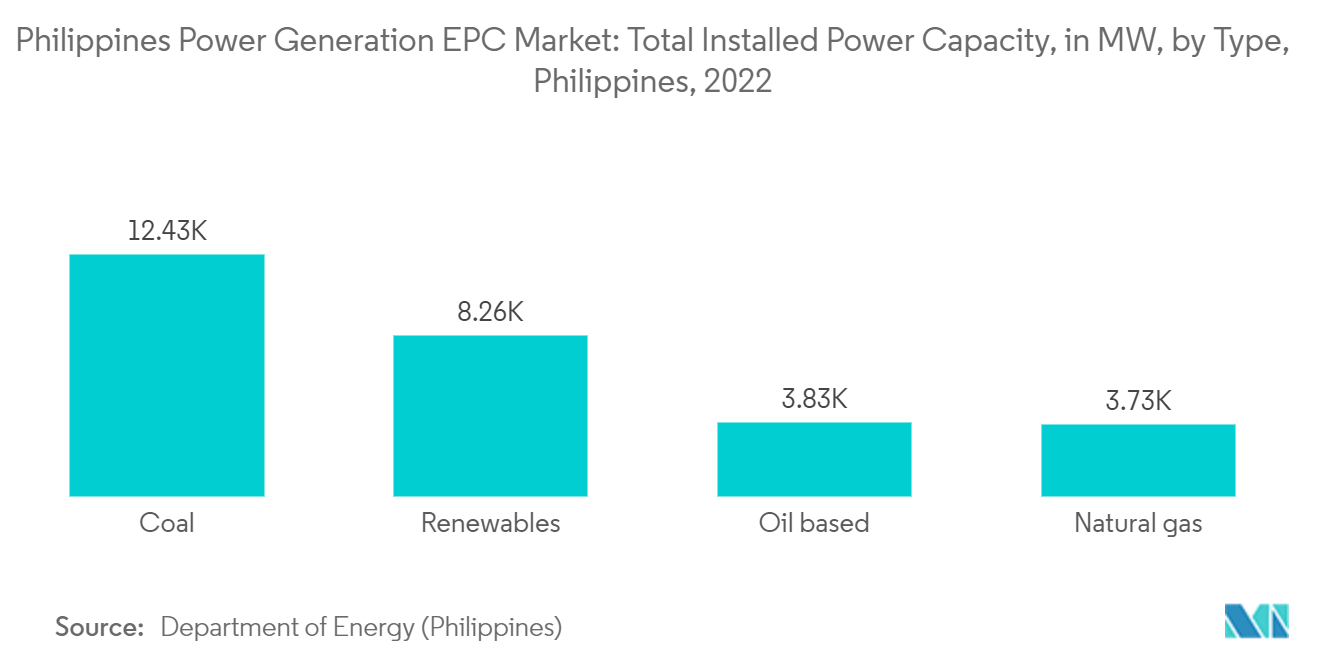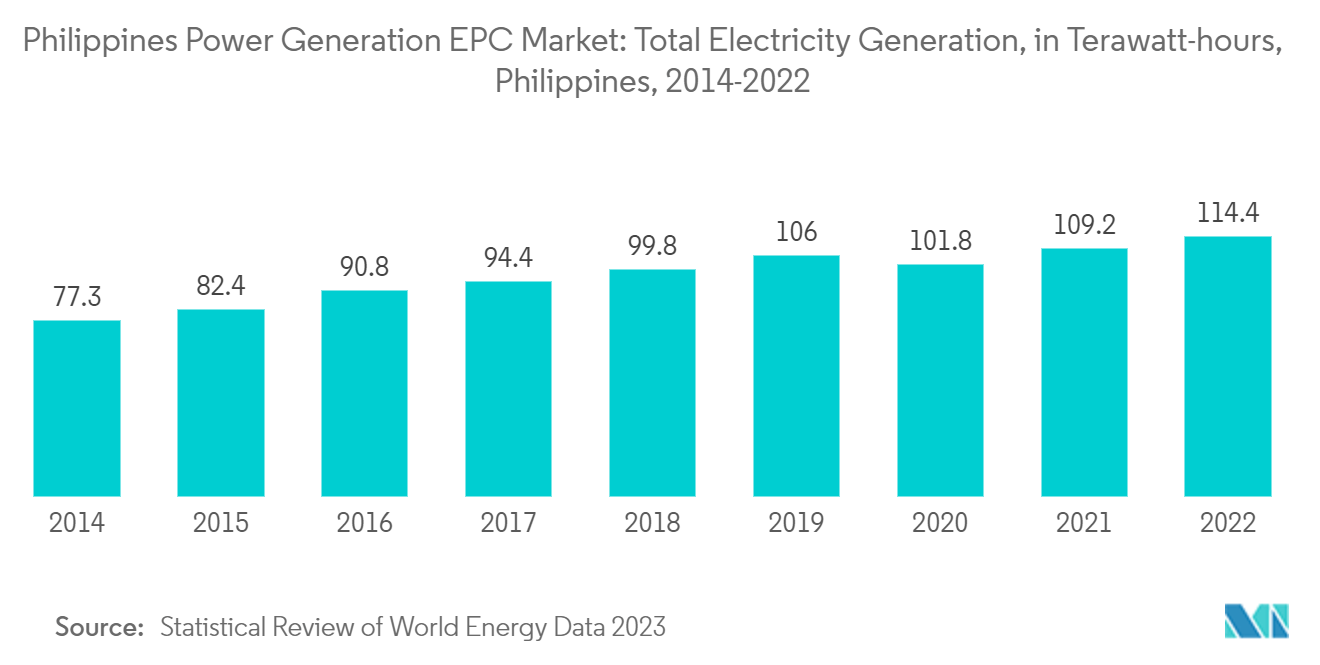Market Trends of Philippines Power Generation EPC Industry
Conventional Thermal Power is Expected to Dominate the Market
- Conventional thermal power is the power that is generated through fossil-fuel sources, such as coal, natural gas, and oil. In 2022, nearly 77% of the electricity generated in the Philippines was from conventional thermal power.
- According to the Department of Energy (Philippines), in 2022, the Philippines had a total installed capacity of about 28.3 thousand megawatts, with over 12 thousand megawatts coming from coal-powered power plants.
- Out of the various sources of generating conventional thermal power, the majority of energy came from coal in 2022. Coal contributed approximately 46.31% of the Philippines' electricity generation. With such a huge percentage of electricity generation through fossil fuels and upcoming power plant projects, the demand for conventional thermal power is expected to increase during the forecast period.
- In March 2022, San Miguel Corporation announced that it would build two gas-fired power plants in the central Philippines for USD 1.14 billion. The construction of both plants was expected to start in the third quarter of 2022; it is expected to be completed in 2025. This development will aid in the growth of the EPC market since projects of such a large scale require extensive engineering, procurement, and construction planning.
- In February 2024, the Department of Energy of the Philippines provided a green flag for Aboitiz to expand the coal-fired power plant located in Cebu by adding another 169 MW unit to its capacity. Such type of power generation expansion will drive the country's thermal power market.
- Therefore, conventional thermal power is expected to dominate the Philippine power generation EPC market during the forecast period.

Upcoming and Ongoing Power Plant Projects are Expected to Drive the Market
- In 2022, the total electricity generation from various sources in the power sector in the Philippines was 114.4 terawatt-hours (TWh). Energy sources contributing to the country's energy generation include coal, natural gas, wind, hydro, geothermal, biofuels, and solar energy.
- According to the Statistical Review of World Energy Data, in 2022, the total electricity generation accounted for 114.4 terawatt-hours (TWh), with an annual growth rate of 4.8% compared to the previous year. With the increasing power plant projects and government focus on renewable energy generation, electricity generation is expected to increase, which, in turn, will drive the power generation EPC market in the future.
- The government has set the target to increase the power generation capacity to increase the grid's capacity, which eventually will drive the power generation EPC market. In April 2024, the Department of Energy of the Philippines announced that it expects at least 4,164.92 megawatts (MW) of power projects to be commissioned this year to enhance the country's energy infrastructure and bolster the power supply and stability of the grid.
- In July 2023, Solana Solar agreed to sign a power purchase agreement (PPA) with Kratos RES, a Philippine firm, to supply 10-20 MW of electricity from its upcoming Solana Solar Power Project in the Philippines. The project will have a total capacity of 20 MWdc, and its owners signed an agreement with the National Grid Corporation of the Philippines to connect the project to the national grid.
- Owing to the above-mentioned points, upcoming and ongoing projects are expected to drive the growth of the Philippine power generation EPC market during the forecast period.


